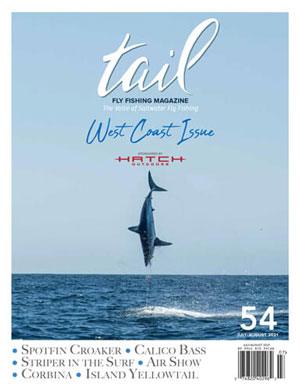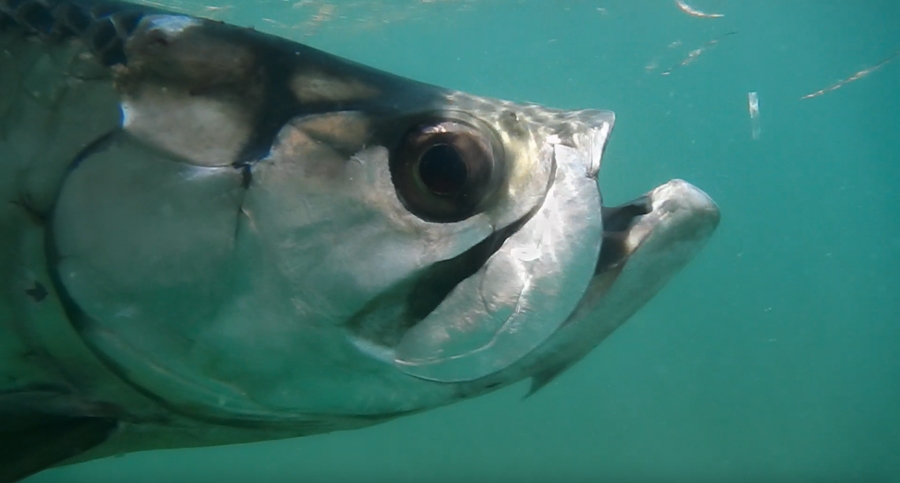It was a typical day in the small fishing village of Boquerón, Puerto Rico.
Captain Francisco Rosario, affectionately known as “Pochy,” was our host, and this was my fourth visit to fish with the unassuming guide. I traveled there with one of my closest friends, who had landed his first tarpon the previous day. After jumping six and landing four on our first day out with Pochy, we both conceded the remainder of this trip could be nothing but disappointing in comparison.
Neither of us could imagine what was about to happen.As we ventured out of Boquerón’s launch/marina/bait shop/auto parts store, the wind shifted 180 degrees and began to rip from the south. Reality was about to set in. The tarpon we had seen everywhere the day before were nowhere to be found.
We couldn’t even locate the scavenger tarpon that make their living eating discarded food from the numerous homes along the backwaters. (Pochy has a fly he calls papa frita, which he says is the only thing the tarpon like as much as the french fries the kids feed them from the docks.) Even the sun seemed hesitant that day, unable to peek out past the low clouds on the horizon.
This was a different fishery—now ominous and strange.
Being a longtime captain and the former host of a television show, Pochy was not rattled. He took us to places protected by structure in an attempt to avoid the wind and find some fish. After a few unsuccessful stops, he sat on the poling platform and stared off to the south for a few minutes before uttering words that no fly angler could ever refuse.
“I think we can try something that will either be very good or very bad,” he said. “We can go to a place where I think the fish will be, but we have to travel far in the ocean, and the water is very rough. You probably will get wet, it will be very choppy, and I cannot promise that there will be fish there.”
With almost perfectly synchronized voices, Grover and I said, “Let’s do it.”
So we went south into the wind, toward the tip of Cabo Rojo along a rocky coastline through sketchy water. There were permit feeding on the surface, picking off crabs that were dislodged from their rocky perches by the strengthening wind and merciless chop. The lower unit of the skiff scraped along the tops of rocky peril hidden just below the surface, undetectable in the agitated water. After a few spine-crunching drops on the bow and some hair-raising scrapes of metal hitting rock, I began to question our decision. Grover put away his camera and asked Pochy where the life vests were.
It actually wasn’t a long ride, but it felt like an eternity. We finally pulled into a cove that was shielded from the wind. The water was calm. It was like we teleported to another part of the world.
Pochy didn’t waste any time and began poling the northeastern shoreline. A few snook made an appearance close to shore, but none of the tarpon that were the reason for Grover’s visit. We didn’t have time, however, to become disinterested.
 “Do you see them?” Pochy asked in a calm, relieved voice. “I thought they would be here.”
“Do you see them?” Pochy asked in a calm, relieved voice. “I thought they would be here.”
We definitely saw them; there was no way to miss them. We were suddenly surrounded by hundreds of tarpon, if not thousands.
They were off the bow, off the stern, rolling everywhere, from 10 feet away to 300 feet. The lagoon was packed with fish, most in the 30- to 60-pound range, and they were gleeful, completely oblivious to our presence. We didn’t just teleport to another country—we teleported to an aquarium filled with hungry tarpon.
Within five minutes we had our first hook up. It was a modest-sized fish in the 30- to 40-pound range. That fish and many others ate a green-and-white, Clouser-type fly. We used blue and white, green and white, silver Gummy Minnows, anything that looked like a baitfish that was 2 to 3 inches long.
After a few singles for each of us, we thought a double hook up would be fun. It was not a great idea. An even worse idea was the triple hook up we achieved by having Pochy cast from the poling platform.
While re-rigging all three rods and laughing about fatigued body parts and skinless thumbs, we determined the unofficial tally of fish jumped or landed was about 40 in five hours. Grover tends to embellish a bit, so 30 is probably closer to the truth. Nonetheless, it was a lot of tarpon.
During the ride back to Boquerón and later at dinner, Pochy explained that this was one of the rare occasions when the conditions aligned perfectly. The tarpon playground was created by a combination of an incoming tide with a big tidal shift two days before the full moon, as well as the shift from a north wind to a south-southwest wind in early spring.
It doesn’t happen every year, as I’ve discovered over the last decade. It was the only time in numerous visits to Cabo Rojo that I experienced the phenomenon. Grover still refers to that little cove as “The Aquarium,” and it remains his first choice when we discuss a tarpon trip.
It’s a day I’ll never forget. If I end up with dementia, I hope this is one of the memories my aging brain locks onto and makes me relive each day.
Pochy is still there and still guiding. His game is a little different after the hurricanes and some chronic back issues that finally caught up to him after bouncing through chop for 40 years, but he remains the best guide in Puerto Rico—and one hell of a nice guy.
You can look him up at lighttackleadventuretarponfishing.blogspot.com/.
 SUBSCRIBE TO TAIL FLY FISHING MAGAZINE
SUBSCRIBE TO TAIL FLY FISHING MAGAZINE


